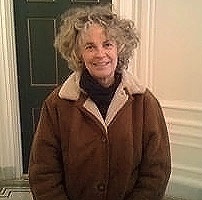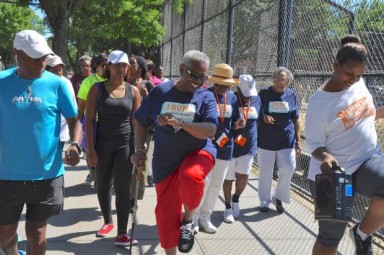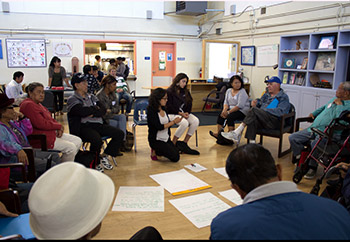It’s All Part of a Whole
Resource type: News
The Communications Network | [ View Original Source (opens in new window) ]
By Gretchen Dykstra

Gretchen Dykstra
Those who toil in the fields of communications know we often graze in the back pastures, far from the main barn, whistled for at the end of day. But we know that every organization and every program needs communications from morning till night. Communications are not just a press release at the end of an initiative. Identifying and reaching appropriate audiences—over and over again– is essential whether you work in direct service, public policy, education, advocacy, the arts or even tropical disease research.
Two years ago Atlantic Philanthropies awarded three-year grants to five well-respected community development organizations in poor neighborhoods nationwide. (Abyssinian Development Corporation, Brownsville Partnership, Chicanos Por La Causa, East Bay Asian Local Development Corporation and The Resurrection Project.) Their mandate: Organize and magnify the voices of seniors and embed an age-friendly perspective into the organizations’ overall strategies. Atlantic aligned its approach with the efforts of the World Health Organization to promulgate age-friendly practices worldwide.
In fact, Chicago, New York and Oakland, three of the cities where the grantees work, are part of WHO’s global network.
Atlantic–through its relationship with the Tides Foundation—also added consultants to the Age Friendly Communities’-USA initiative: project management, evaluation, technical assistance and strategic communications. I’ve been providing the communications help.
I work with the groups individually (on the phone and through email), helping them to think through how best to position themselves internally and externally. I react to their written materials and I have sent them critiques of their websites. I make connections for them when I can and I send relevant articles and information to them. As a group, we have a monthly conference call on which I participate, offering comments and suggestions, and we have experimented with online peer learning, swapping experiences, sharing relevant information and pertinent materials on Sharepoint.

We have all attended the World Health Organization’s annual conferences on age-friendly cities, benefitting from its sessions and its worldwide focus. This year in Quebec Ruth Finkelstein from the New York Academy of Medicine, the technical advisor to the project, served as one of the key organizers of the conference; the evaluation team from NeighborWorks America and I developed a well attended and well received panel on evaluation and communication and we were all proud that one of our grantee colleagues, Rasmia Kirmani-Frye from the Brownsville Partnership in Brooklyn, gave one of the plenary speeches to enthusiastic acclaim.
But the most valuable activities, in my opinion, have been when the group (about 25 people) convenes in each other’s cities. So far we have met in Chicago and Phoenix and soon we will meet in Oakland. I always participate in the planning of the meetings and try to show program people that much of what they do is, in fact, good communications: Reaching and maintaining connections with clients, building partnerships, telling stories, influencing policymakers, funders and government agencies–it’s all communications and, depending on the target, different tactics are required. We have revisited this point many times in various ways. Because more support from Atlantic will not be forthcoming at the end of the three years, sustainability becomes key, too, for this particular group and sustainability is, first and foremost, about money and finding money is often about communications.
 In Oakland we will emphasize this. We will bring development—a close cousin to communications–into the equation. We will explore what program people need to know about how development professionals do their work: How do they make decisions when their time and external resources are both limited? How do development directors deal with the inherent competition among program people for more resources? How does a smart program person position him/herself in the eyes of a development person? What are good examples of close collaboration between program and development? Program people are, for the most part, relieved of having to raise money to meet the payroll, but if they can stand for a moment in the well-worn shoes of development professionals their programs might last forever! It is all part of a whole and, understanding that, might bring communications rightfully back from the fields to live with all the other workhorses in the barn.
In Oakland we will emphasize this. We will bring development—a close cousin to communications–into the equation. We will explore what program people need to know about how development professionals do their work: How do they make decisions when their time and external resources are both limited? How do development directors deal with the inherent competition among program people for more resources? How does a smart program person position him/herself in the eyes of a development person? What are good examples of close collaboration between program and development? Program people are, for the most part, relieved of having to raise money to meet the payroll, but if they can stand for a moment in the well-worn shoes of development professionals their programs might last forever! It is all part of a whole and, understanding that, might bring communications rightfully back from the fields to live with all the other workhorses in the barn.
World Health Organization and the Tides Foundation are Atlantic grantees.